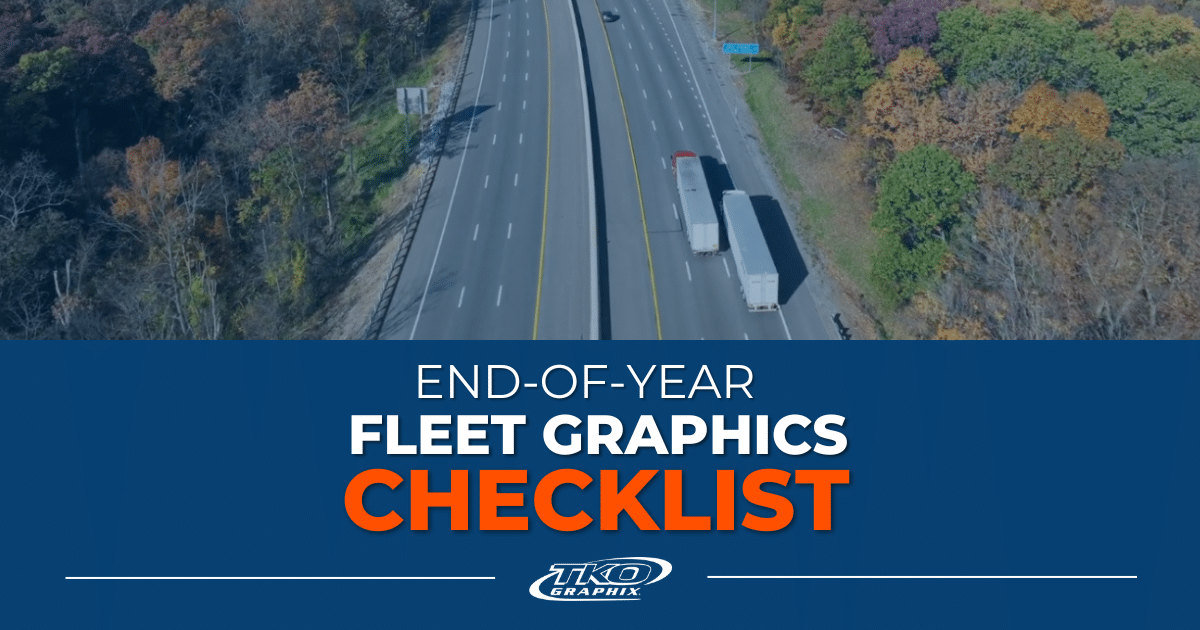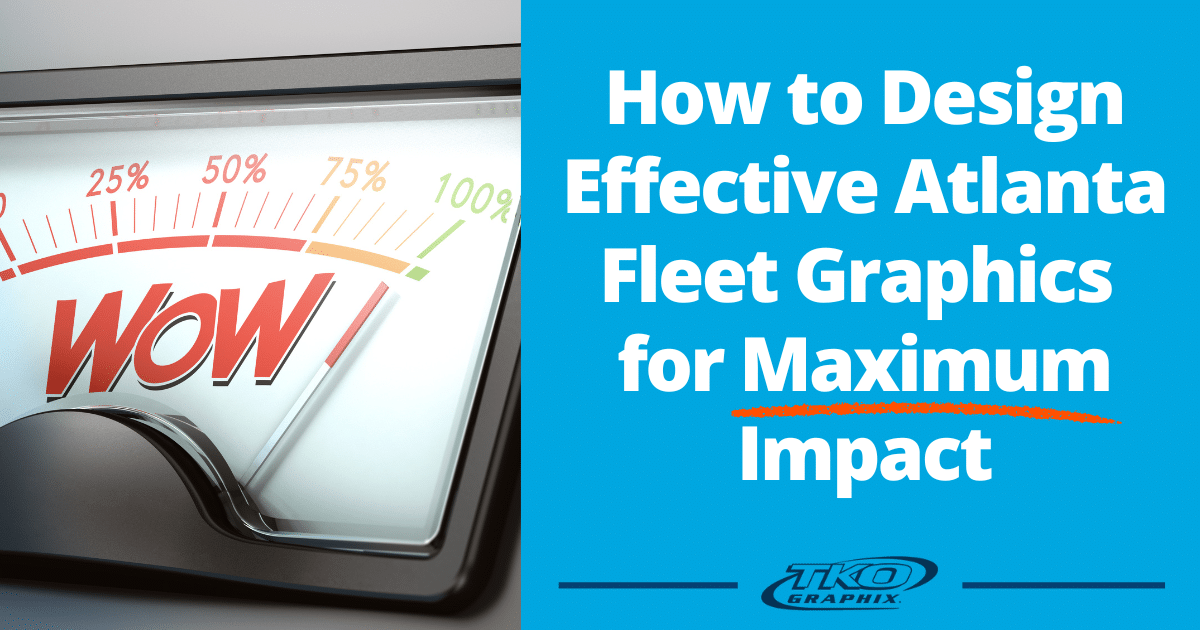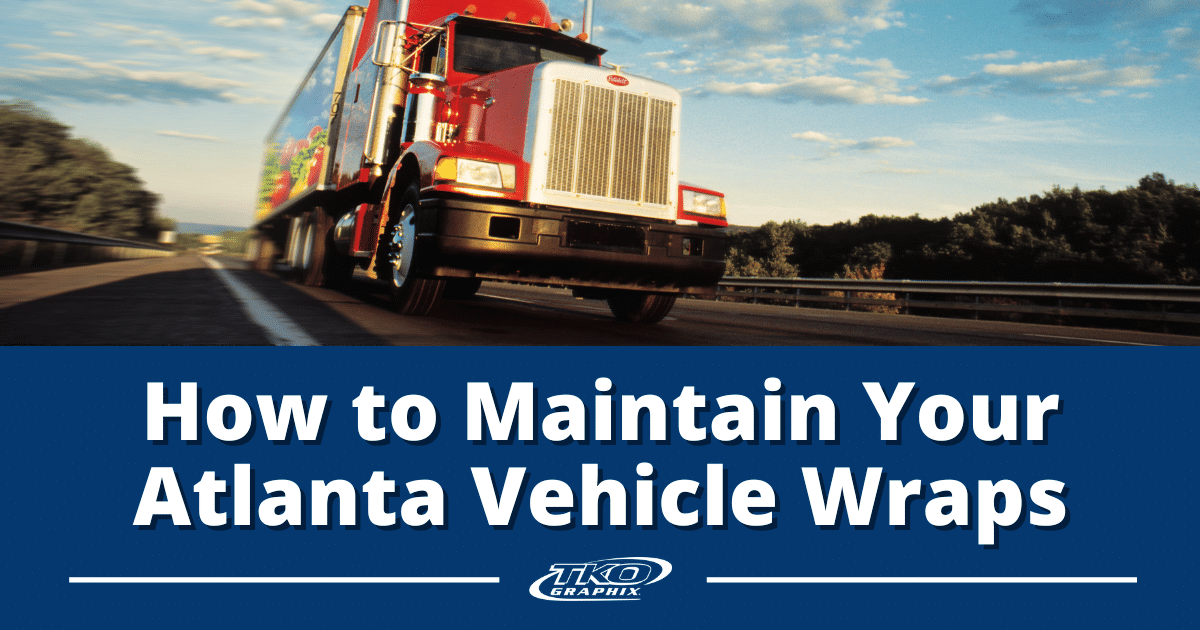The fleet graphics process can be a challenge. It’s time-consuming and can be disruptive. It’s essential to plan, coordinate, and follow up on the process to avoid these costly challenges of fleet graphics.
Downtime
One of the most costly challenges of fleet graphics is downtime. Poor planning, lack of coordination, and limited follow up can be expensive. Often not only do vehicles need to be delivered to installation locations, but they’re also taken out of the rotation for pre-installation preparation before applying the adhesive vinyl graphics. So, how much does it cost to take your fleet vehicles off the road?
“For many company fleets, downtime is tangible and can be translated into dollars. In fact, downtime costs a fleet an average of $448 to $760 a day, per vehicle, and those figures add up fast.” — The true cost of vehicle downtime
If it takes two days to deliver the car or truck to the installation location, a day to de-identify and prep the surface to receive adhesive vinyl graphics, a day to install, and another day to send the car or truck, then the fleet vehicle has been out of service for five days. At $448 per day, that’s $2,240. Now, multiply that by the number of vehicles converted. Is it 10, 100, 1,000? When you do the math, it isn’t very comforting.
4,000 vehicles, 200 locations
“A company contacted TKO Graphix to manufacture, de-identify, and install new graphics. TKO’s online fulfillment program was used to coordinate the decal manufacturing, shipping, delivery, and installation to all 200+ locations, dividing the process into 4 phases, with five installation crews traveling North America. Individual company branch locations were able to access status information at any time. The fulfillment program integrated all phases of the process with TKO Graphix and the customer. The work was all completed after work hours with zero down time of fleet vehicles. A potential multi-thousand-dollar loss, from interrupted work, was avoided.” — Case Study: 4,000 vehicles, 200 Locations, and Zero Downtime
Logistics
When considering logistics for fleet graphics, it’s more than getting trucks to the location on time. It’s also coordinating surface preparation, material delivery, installation teams.
“Before any of the work started, project procedures and job progress tracking were established. Together, TKO Graphix Project Managers and the customer set expectations of the job, including deadlines, locations, and logistics. Project Managers implemented a detailed plan of coordinating the printing, shipping, decal removal, and installation, as well as planning, on-site preparation, scheduling delivery of tractor-trailers, and managing the online job tracking system.”– Case Study: 17,000 Piece Rebrand
Surface Preparation
Preparing the substrate for adhesive vinyl application includes de-identification (removing existing decals and wraps), cleaning, and occasionally repairs.
“The biggest mistake is not prepping the surface,” says Jeff Stadelman. “It’s so important to have a clean surface to put the adhesives down on. That’s definitely the number one error.” No matter the substrate, glass or paint, and no matter the installation method wet or dry – if you do not clean the substrate properly then you will end up with a contaminated surface that hinders the performance of the adhesive.” — Preparing the surface.
“Surfaces must be finished, clean, and dry. Organics, such as animal and insect remains, food particles, and plant material, in most cases, may be removed with mild soap and water. Solvents need to be removed, such as petrochemicals, for example, wax, oil, or diesel. Understanding how solvents affect the material and following directions on the label will help prevent surface preparation failures. All surfaces must be completely dry before applying graphics. Uncured finishes may hold and leach moisture, which will adversely affect vinyl graphics placed over the uncured surface.” – – Vehicle Graphics Surface Preparation for Various Substrates
How important is preparation?
“How important is prepping a vehicle for graphics installation? The answer is it’s critical. Using the wrong material can cause a bevy of problems. Little things such as cleaning with a dirty rag leaves behind grime that can reduce the adhesion of the vinyl leading to damage, which is not such a little thing. Leave a spot of water on the surface, and eventually, it will bubble up, especially if it freezes. Bubbles in vehicle wraps aren’t pretty, and they almost always rip.
Try cleaning the substrate with the wrong solution, and you may leave behind a waxy build-up, invisible, but deadly to adhesive vinyl. Small spots of oil, grease, and contaminants can reduce even the best-looking fleet graphics to looking like something out of a demolition derby. And it’s not only cleaning the substrate; it’s knowing the vinyl will adhere to the surface. Is the surface ready for adhesive vinyl graphics? Graphics applied to fresh uncured paint, or over rust and dents usually only leads to disappointment.” — Prepping a Vehicle for Graphics Installation
Providers
Fleet graphics installation is a multiple-step operation. It begins with design, proceeds to production, and then installation. However, they’re more steps under each of these. For example, installation includes de-identification, surface preparation, and adhesive vinyl application. Coordinating these processes between multiple vendors can be time-consuming and lead to mistakes. Using separate companies to design, de-ID, produce, and then install can become a challenge. However, we have an answer.
“For more than 30 years, TKO Graphix has built a reputation for outstanding design, installation, and customer service. Last year we completed graphics on nearly 60,000 fleet vehicles, tractors, trailers, and trucks. However, we don’t only sell vehicle graphics we’re involved in the process every step of the way. — Here’s Why You Should Choose TKO Graphix for Your Fleet Graphics
Maintenance
Creating and adhering to a maintenance plan for your new fleet graphics is critical. If you had a new vehicle would you follow the recommended vehicle maintenance such as oil changes, tire rotation, and tune ups? I’m guessing you would because not following the maintenance schedule can be expensive. It’s the same with fleet graphics. Not maintaining your adhesive vinyl graphics can lead to early failure, damage, and the expense of repair or replacement. So, how do you maintain adhesive vinyl graphics?
Keep it clean!
“To begin with, keep it clean. If your wrapped vehicle looks dirty – wash it. Don’t wait until someone writes “wash me” with their index finger on the hood of your car. Yes, your wrap looks better when it’s clean, but what’s more important is that dirt and debris contain contaminants that can damage your wrap. Some pollutants directly affect the adhesive vinyl, while others become difficult to remove the longer they’re attached to the wrap. In either case, it’s essential to clean away the dirt, debris, and contaminants ASAP.” — The Do’s and Don’ts of Vehicle Graphics Maintenance
If you’d like to learn more about proper care and maintenance of adhesive vehicle graphics, we recommend 3M Caring for Your Vehicle.
The Costly Challenges of Fleet Graphics
“Fleet graphics are a vital part of a fleet or marketing manager’s job. Choosing graphics that represent the brand, look great, and will last — isn’t easy. And it doesn’t stop there; in most cases, graphics will be on a fleet for years to come. With that in mind, we’ve tried to cover as many of the challenges, options, pitfalls, and suggestions any fleet manager may need, from designing to maintaining and repairing vehicle graphics. This short guide wasn’t intended to be read from start to finish but referred to as needed. For example, if you need to learn more about graphic warranties or finding installers start there.” — The Fleet Managers Guide to Fleet Graphics
If you’d like us to help you avoid the costly challenges of fleet graphics, contact us.







